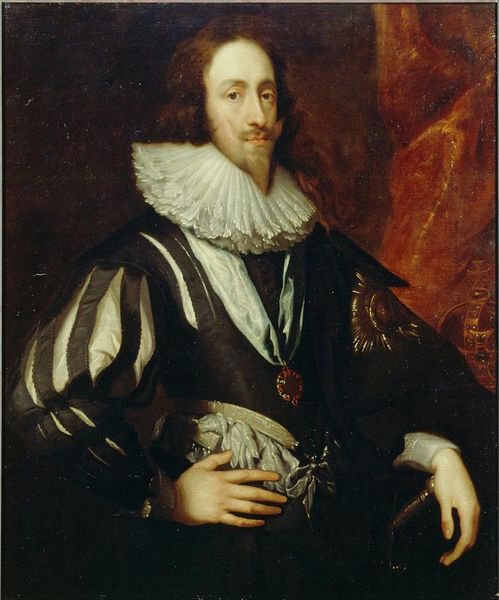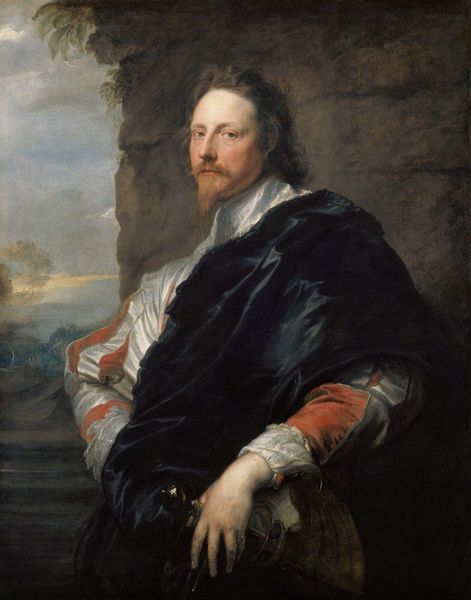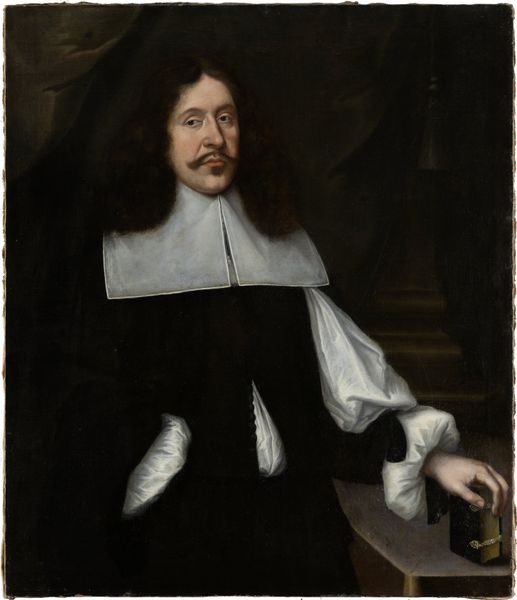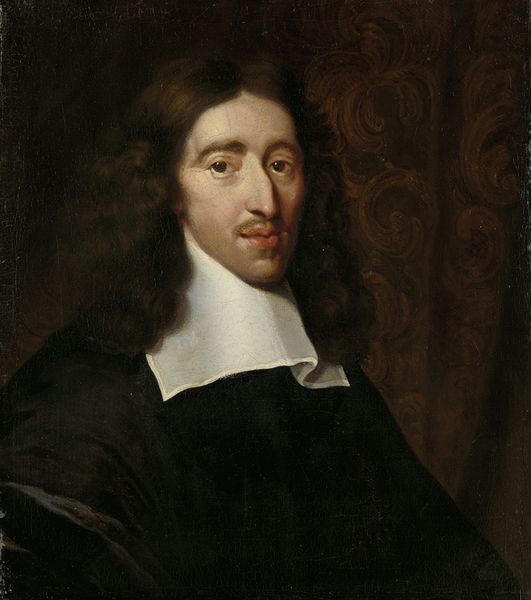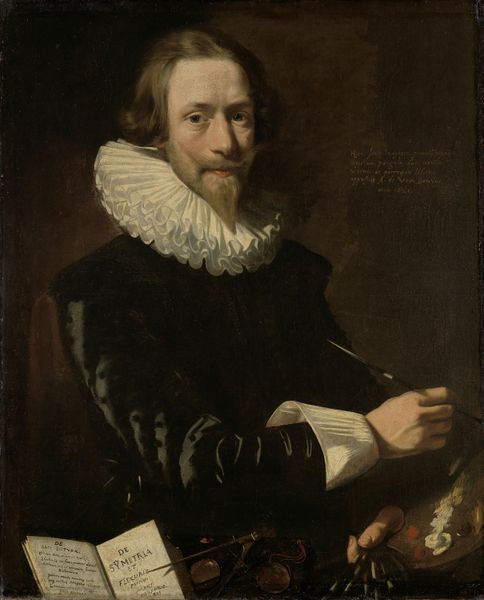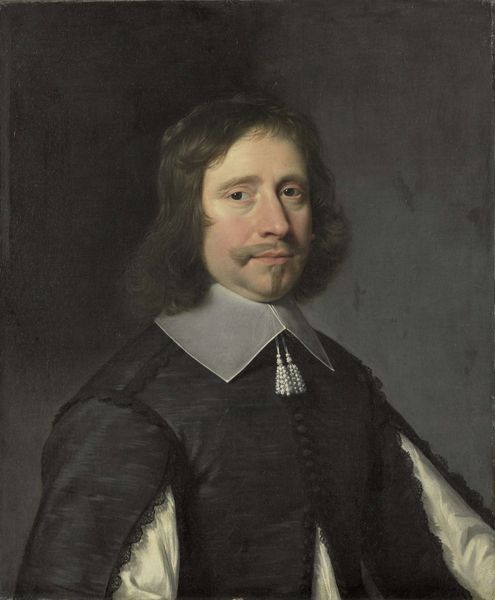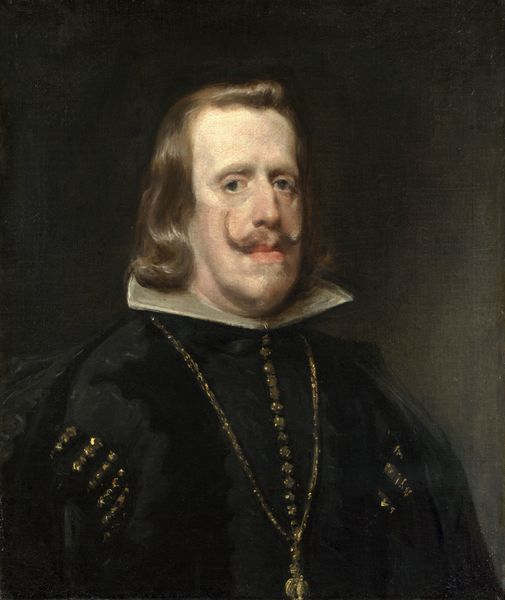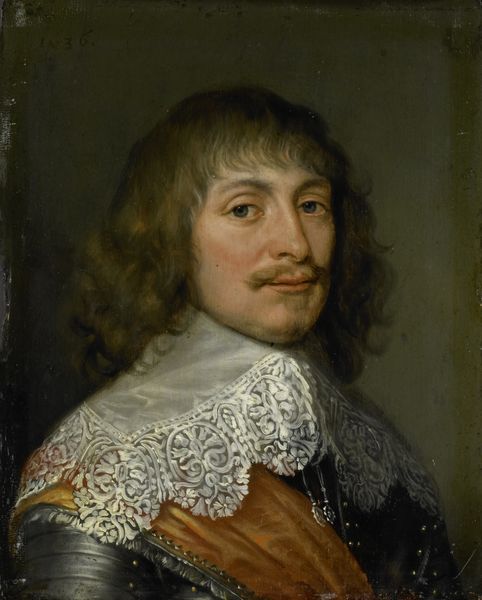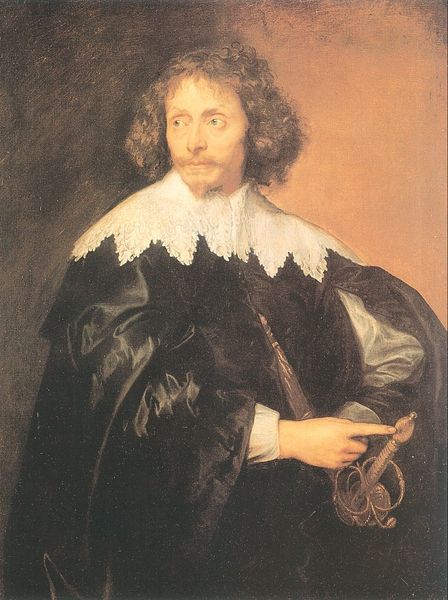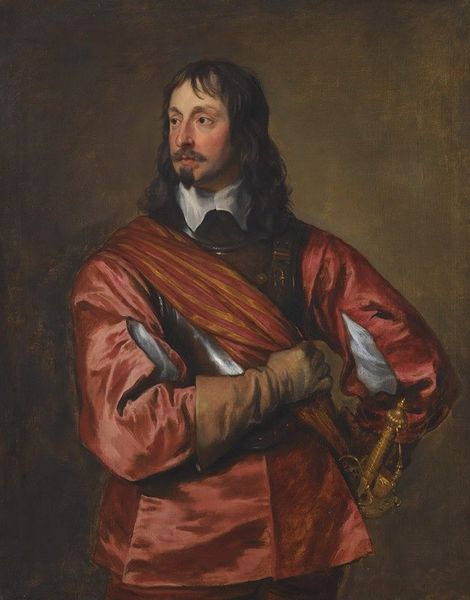
painting, oil-paint
#
portrait
#
baroque
#
painting
#
oil-paint
#
genre-painting
#
history-painting
Copyright: Public domain
Curator: This is Anthony van Dyck’s portrait of Philip Herbert, 4th Earl of Pembroke. What are your initial thoughts on this presentation? Editor: It strikes me immediately as a study in textures: the stiff lace collar, the sheen of the satin cloak, and the soft furrows in his face, all rendered with exquisite attention. It's tempting to reach out and touch the surface of the canvas, to understand the material reality of those luxurious fabrics. Curator: And consider who Phillip Herbert was: a courtier during a turbulent period in English history, under the rule of Charles I. Van Dyck, as the court painter, portrays him with the markers of aristocratic power: the gaze of authority, the rich garments, the suggestion of landscape in the background implying land ownership. But there's also a certain fragility, a melancholy, isn’t there? Editor: Definitely. The subdued palette, the emphasis on the materials of status – satin, lace, and the implied gold of that chain - all suggest an economy built on labor. What's absent from the frame, however, speaks volumes: who made those fine clothes? Who toiled on those lands? Curator: Exactly. Pembroke was a controversial figure, a favorite of the king but also someone accused of violence and impulsive behavior. I read his melancholic aura not merely as a personality trait, but an embodied reflection of societal fractures and a system dependent on visible signs of prestige even as the foundation upon which such systems rest is built on unequal labor dynamics and moral compromises. Editor: It brings into focus questions around consumption, class and labor, doesn’t it? Even this portrait functions as a form of material consumption, an object produced for the benefit of the elite, by those largely unseen. Curator: Absolutely, and to that end, what’s truly potent about examining portraiture within these complex power dynamics is recognizing that while we observe this figure isolated within this pictorial space, to understand Phillip Herbert necessitates examining the collective webs that brought him and, consequentially, this image into being. Editor: So, while Van Dyck's masterful rendering of textures and materials captivates the eye, it’s crucial to dig deeper to unveil what isn't so easily apparent to find historical connections around value and making, right? Curator: Precisely. Hopefully this provides some food for thought as we continue navigating this period.
Comments
No comments
Be the first to comment and join the conversation on the ultimate creative platform.
